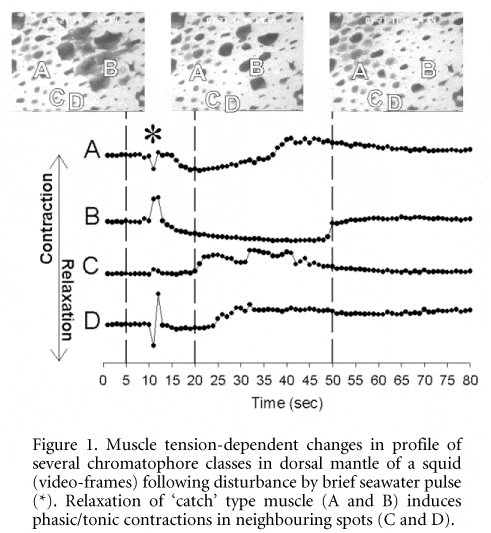Figure 1 traces the changes in tension developed by muscle fibres Ð here classed as ‘catch’ type and ‘tonic/phasic’ Ð on the pigment spots of four overlapping populations of chromatophores in the skin of an intact squid (Loligo vulgaris). Polygonal profiles, due to catch type fibres, develop post-mortem as the motor nerves begin to die. They relax on stimulation with a brief seawater pulse and are replaced by round ‘tonic/phasic’ profiles. Expansion of the latter Ð signalling muscle contraction (or contracture) Ð are not directly induced by the original disturbance but by a clearing of the wave space left by relaxation (catch release) of the former. The two contractile states relate reciprocally to each other both within a single chromatophore (trace A), the muscle fibres of which are known to be coupled, and between classes (A/B and C/D). Time courses (10-20 s) for catch release and subsequent invasion of the wave space by tonic/phasic profiles vary with context. Cycling between the two continues post-mortem for many hours.
In life they also have reciprocal roles. Spots expanded by catch type muscle are for feature generation against a clear skin; round profiles due to tonic/phasic muscle are for tone matching and countershading, with feature generation usually suppressed.
Computing and graphics were by L. Caputi.

